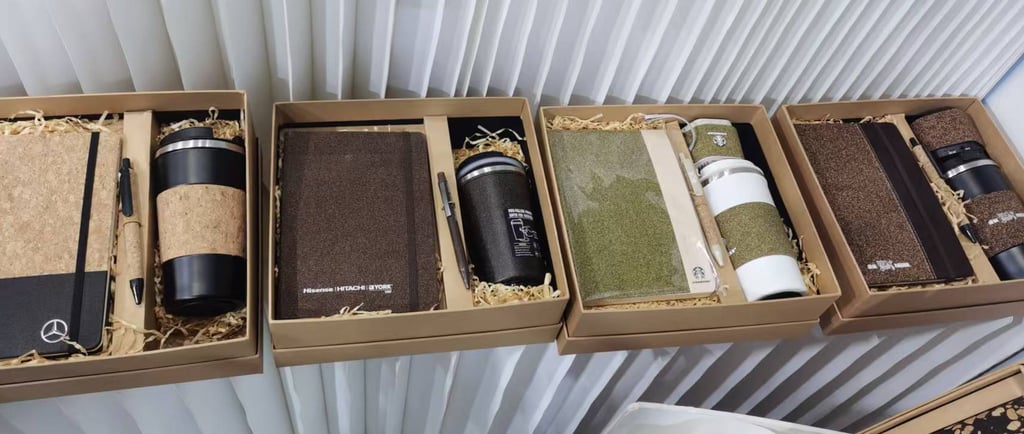Green Gifts in China 2025: Cork, Coffee, and Tea Waste Are Stealing the Spotlight
China’s 2025 gift trade shows have made sustainable materials the defining feature of many booths. Producers are unveiling cork-based notebooks and bags, coffee-grounds bio-leather that hits ~70% plant content (per CIGNO), and smaller accessories—keychains, card holders—created from tea waste. These innovations combine texture, story, and eco-functionality. As environmental awareness rises in China, such items are no longer side displays but star products—setting the trend for what consumers expect from gifting and everyday lifestyle items.
Anny
9/16/20252 min read


In 2025, I’ve been hitting up gift expos in China, and one thing is clear: eco-materials are no longer niche-they’re becoming the showfloor buzz. From sustainable cork to creative coffee grounds leather and tea-waste accessories, designers are pushing boundaries, and customers are noticing.
🌿 Incredible Innovation I’ve Seen + Heard About
I discovered one supplier, that offers what they call “coffee cork fabric”-blending recycled coffee grounds with natural cork. According to their product page, this material merges the distinctive aroma and texture of coffee with cork’s elasticity, durability, water resistance, and eco-friendliness.
Another trend emerging across one showrooms: “Coffee Grounds Sustainable” product collections. You’ll find accessories, mugs, and smaller gift items using coffee waste combined with biopolymers or cork backing.
There’s also growing interest in tea waste materials. One story talked about makers turning tea dregs into gift items like tea bags, tables, and small décor. While I didn’t yet see large volumes of tea-waste bags on big expo stands, the innovation is clearly brewing.
🔍 What Makes These Materials Stand Out
Why are these small recycled materials getting so much love? Here’s what I think:
Authentic Waste Upcycling: Instead of new plastics, these are reusing things people throw away-coffee leftover, cork bark, tea dregs. That’s inherently appealing to an eco-aware consumer.
Texture + Story: A cork journal or coffee leather bag smells faintly of coffee, feels unique in texture. Customers love small sensory differences-it gives products personality.
Lower Entry Risk: For designers, using small waste-based inserts lets them experiment without full retooling. You can test a tea-waste notebook cover or a coffee fabric panel in a bag without overinvesting.
🚧 Challenges & What Shows Tell Me
Of course, it's not perfect:
Durability is mixed. Coffee-cork fabric, for example, often is more delicate than full grain leather, especially around stress points like zippers or corners.
Scaling is still constrained. Not every manufacturer has reliable supply of consistent tea or coffee waste, or the tech to treat these materials properly.
Regulatory and standards clarity is lacking. At many expos, I saw “coffee leather,” but it wasn’t always clear whether this is a coating over synthetic, a bio-composite, or a fully renewable base.
💡 Why This Is Big (And What I’m Doing Next)
Given China’s growing environmental laws, consumer demand, and government focus on reducing waste, I believe these green materials will keep getting bigger. As more attention turns to “source,” “story,” and “fabric lifecycle,” products using cork, coffee grounds, and tea waste aren’t just novelty-they are competitive.
What I’m doing: I’ve ordered small sample batches of coffee-cork fabric to build prototypes of bags and notebook covers. I’m testing for wear, odor retention, water resistance. If they pass, I’ll include them in next season’s collection-and I’ll share side-by-side photos so people can see exactly how these materials perform in the real world.
Sustainability
Crafting fine leather bags with a commitment to sustainability.
Contact
Join
© 2023. All rights reserved.
